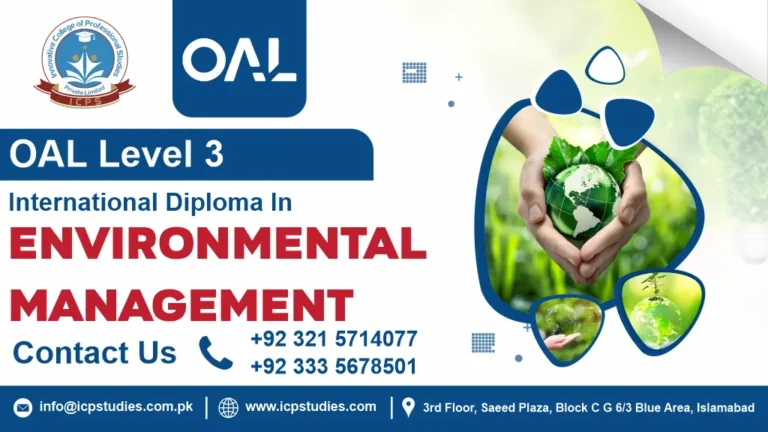In the dynamic world of occupational safety and health, continuous learning and professional development are essential. The OSHA 132-Hour OSH Professional Course stands out as a comprehensive training program designed to equip safety professionals with advanced skills and knowledge in occupational safety and health. This extensive course offers a deep dive into various aspects of workplace safety, preparing participants to tackle complex safety challenges and contribute to creating safer work environments.
The OSHA 132-Hour OSH Professional Course is an advanced training program developed by the Occupational Safety and Health Administration (OSHA) to provide an in-depth understanding of occupational safety and health principles. This course is designed for individuals seeking to enhance their expertise in safety management and compliance, offering a broad range of topics relevant to ensuring workplace safety and health.
The OSHA 132-Hour OSH Professional Course offers an invaluable opportunity for safety professionals to deepen their knowledge and enhance their skills in occupational safety and health. By providing comprehensive training on OSHA regulations, hazard identification, risk management, and safety program development, this course prepares participants to excel in their roles and contribute to safer, healthier workplaces. Enroll in the course to advance your career and make a significant impact on workplace safety and compliance.
All About OSHA 132-Hour OSH Professional
Course Overview
The OSHA 132-Hour OSH Professional is an advanced training program designed for individuals seeking to enhance their expertise in occupational safety and health (OSH). This comprehensive course provides a thorough understanding of OSHA regulations, safety management practices, and risk assessment techniques, aiming to equip participants with the skills needed to manage and improve workplace safety effectively.
The OSHA 132-Hour OSH Professional Course is a comprehensive and advanced training program designed to equip safety professionals with the knowledge and skills needed to excel in managing occupational safety and health. By covering a wide range of topics and providing practical experience, the course prepares participants to tackle complex safety challenges and contribute to creating safer, healthier workplaces.
Study Units
- Introduction to Occupational Safety and Health (OSH)
- OSH Legislation and Standards
- Hazard Identification and Risk Assessment
- Workplace Safety Programs and Policies
- Incident Investigation and Reporting
- Emergency Preparedness and Response
- Health and Safety Audits and Inspections
- Ergonomics and Workplace Design
- Safety Training and Communication
- Personal Protective Equipment (PPE)
- Occupational Health and Hygiene
- Construction Safety
- Electrical Safety
- Machine and Equipment Safety
- Behavioral Safety and Safety Culture
- Occupational Stress Management
- Environmental Management and Sustainability
To enroll in the OSHA 132-Hour OSH Professional course, participants typically need to meet the following requirements:
- Age Requirement: Participants should be at least 18 years old.
- Basic Literacy: A good understanding of English is necessary, as course materials and instruction are primarily in English.
- Professional Experience: It is generally recommended that participants have some experience in occupational safety and health, though not always mandatory.
- Educational Background: A background in safety, health, or a related field can be beneficial but is not typically required.
- No Formal Prerequisites: There are usually no strict prerequisites for this course, but familiarity with safety regulations and concepts may be advantageous.
- Course Registration: Participants must register for the course through an authorized training provider.
- Payment: Course fees must be paid as required by the training provider.
- Commitment to Attend: Participants should be prepared to attend the full duration of the course (132 hours) to receive certification.
The OSHA 132-Hour OSH Professional course is designed for:
- Safety Professionals: Individuals who are responsible for developing and managing safety programs in various industries.
- Safety Managers and Supervisors: Those overseeing workplace safety and ensuring compliance with safety regulations.
- Health and Safety Committee Members: Employees involved in safety initiatives within their organizations.
- Workers in High-Risk Environments: Employees in industries such as manufacturing, construction, and healthcare who require advanced safety training.
- Consultants and Trainers: Those who provide safety training and advice to organizations.
- Individuals Seeking Certification: Professionals aiming to enhance their credentials in occupational safety and health.
Learning Outcome
Introduction to Occupational Safety and Health (OSH)
- Understand OSH Fundamentals: Gain a foundational understanding of occupational safety and health concepts, including their importance in protecting workers and promoting a safe work environment.
- Recognize Key OSH Roles: Identify the roles and responsibilities of safety professionals, management, and employees in maintaining workplace safety.
2. OSH Legislation and Standards
- Comprehend Regulations: Learn about key OSHA regulations, standards, and guidelines relevant to different industries.
- Ensure Compliance: Develop skills to ensure organizational compliance with OSHA requirements and other safety regulations.
3. Hazard Identification and Risk Assessment
- Identify Hazards: Master techniques for identifying various workplace hazards, including physical, chemical, biological, and ergonomic risks.
- Conduct Risk Assessments: Learn to assess risks associated with identified hazards and prioritize control measures to mitigate those risks.
4. Workplace Safety Programs and Policies
- Develop Safety Programs: Understand how to design and implement effective workplace safety programs and policies that address specific hazards and regulatory requirements.
- Evaluate Program Effectiveness: Learn methods for evaluating the effectiveness of safety programs and making necessary improvements.
5. Incident Investigation and Reporting
- Conduct Investigations: Acquire skills in investigating workplace incidents, identifying root causes, and implementing corrective actions.
- Report Findings: Learn to document and report incidents accurately, ensuring compliance with regulatory requirements and promoting safety improvements.
6. Emergency Preparedness and Response
- Plan for Emergencies: Develop comprehensive emergency preparedness plans, including procedures for handling fires, natural disasters, and other emergencies.
- Implement Response Procedures: Learn how to conduct emergency response drills and ensure that employees are prepared for emergency situations.
7. Health and Safety Audits and Inspections
- Conduct Audits: Gain expertise in planning and conducting health and safety audits and inspections to assess compliance and identify areas for improvement.
- Document and Report: Learn to document audit findings, prepare detailed reports, and communicate results to management and staff.
8. Ergonomics and Workplace Design
- Understand Ergonomics: Learn principles of ergonomics and how they impact workplace design and employee health.
- Design Ergonomic Workspaces: Develop skills to design workspaces and tasks that minimize ergonomic risks and enhance worker comfort and productivity.
9. Safety Training and Communication
- Develop Training Programs: Understand how to create and deliver effective safety training programs tailored to different employee groups.
- Improve Communication: Learn techniques for improving safety communication and ensuring that safety messages are clearly understood and acted upon.
10. Personal Protective Equipment (PPE)
- Select PPE: Learn how to select appropriate personal protective equipment based on hazard assessment and regulatory requirements.
- Ensure Proper Use: Understand the importance of proper PPE use and maintenance, and develop training programs to ensure employees use PPE correctly.
11. Occupational Health and Hygiene
- Identify Health Hazards: Gain knowledge of common occupational health hazards, including chemical exposures, noise, and biological agents.
- Implement Control Measures: Learn methods for controlling and mitigating health hazards to ensure a healthy work environment.
12. Construction Safety
- Understand Construction Hazards: Learn about specific hazards associated with construction sites, including fall protection, scaffolding, and machinery.
- Implement Safety Controls: Develop skills to implement safety controls and programs tailored to the construction industry.
13. Electrical Safety
- Identify Electrical Hazards: Understand common electrical hazards and their risks, including shock, arc flash, and electrocution.
- Implement Safety Measures: Learn to implement safety measures and practices to prevent electrical incidents and ensure safe electrical systems.
14. Machine and Equipment Safety
- Assess Equipment Risks: Gain skills in assessing risks associated with machinery and equipment, including maintenance and operational procedures.
- Implement Safety Controls: Learn to implement safety controls, including machine guarding and safe operating procedures, to protect workers.
15. Behavioral Safety and Safety Culture
- Promote Behavioral Safety: Understand the principles of behavioral safety and how to influence safe behaviors in the workplace.
- Foster Safety Culture: Learn strategies for developing and maintaining a positive safety culture that encourages proactive safety practices and employee involvement.
16. Occupational Stress Management
- Identify Stressors: Learn to identify sources of occupational stress and their impact on employee well-being and safety.
- Develop Stress Management Programs: Develop programs and strategies to manage and mitigate occupational stress, promoting a healthier and safer work environment.
17. Environmental Management and Sustainability
- Understand Environmental Regulations: Gain knowledge of environmental regulations and standards related to occupational safety and health.
- Implement Sustainability Practices: Learn to implement sustainability practices that minimize environmental impact and support overall organizational goals.
FAQs about OSHA 132-Hour OSH Professional







